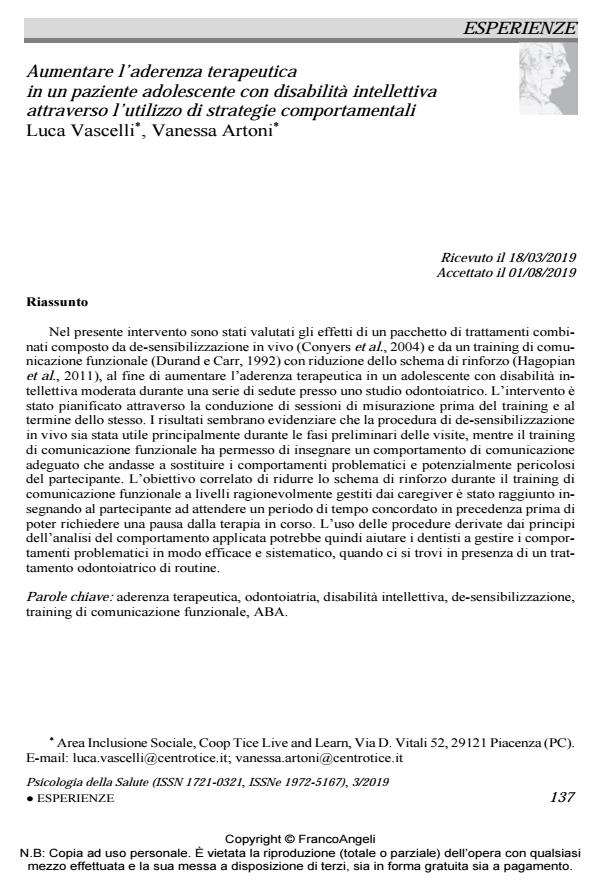Increase therapeutic adherence in an adolescent with intellectual disability through the use of behavioral strategies
Journal title PSICOLOGIA DELLA SALUTE
Author/s Luca Vascelli, Vanessa Artoni
Publishing Year 2019 Issue 2019/3
Language Italian Pages 17 P. 137-153 File size 221 KB
DOI 10.3280/PDS2019-003008
DOI is like a bar code for intellectual property: to have more infomation
click here
Below, you can see the article first page
If you want to buy this article in PDF format, you can do it, following the instructions to buy download credits

FrancoAngeli is member of Publishers International Linking Association, Inc (PILA), a not-for-profit association which run the CrossRef service enabling links to and from online scholarly content.
In the present intervention, the effects of a combined package of treatments consisting of in vivo de-sensitization (Conyers et al., 2004) and functional communication training (Durand and Carr, 1992) with reduction of the schedule of reinforcement (Hagopian et al., 2011), were evaluated in order to increase therapeutic adherence in an adolescent with moderate intellectual disability during a series of sessions in a dental practice. The intervention was designed by conducting measurement sessions before and after the training. The results seem to show that the in vivo de-sensitization procedure was mainly useful during the preliminary phases of the visits, while functional communication training allowed to teach an adequate communication behavior that would replace problematic and potentially dangerous behaviors of the participant. The related objective of reducing the schedule of reinforcement during functional communication training to levels reasonably managed by the caregivers was achieved by teaching the participant to wait for a previously agreed period of time before requesting a break from the ongoing therapy. The use of procedures derived from the principles of applied behavior analysis could therefore help dentists to manage problematic behaviors in an effective and systematic way, during routine dental treatment.
Keywords: Therapeutic adherence, dentistry, intellectual disability, de-sensitization, functional communication training, ABA.
Luca Vascelli, Vanessa Artoni, Aumentare l’aderenza terapeutica in un paziente adolescente con disabilità intellettiva attraverso l’utilizzo di strategie comportamentali in "PSICOLOGIA DELLA SALUTE" 3/2019, pp 137-153, DOI: 10.3280/PDS2019-003008